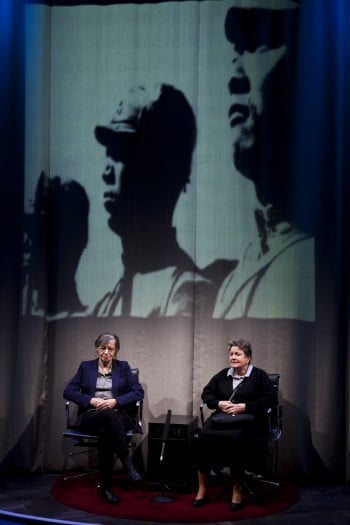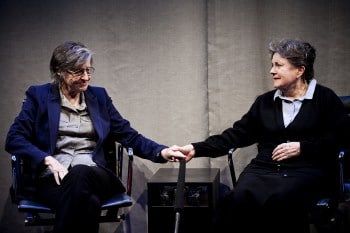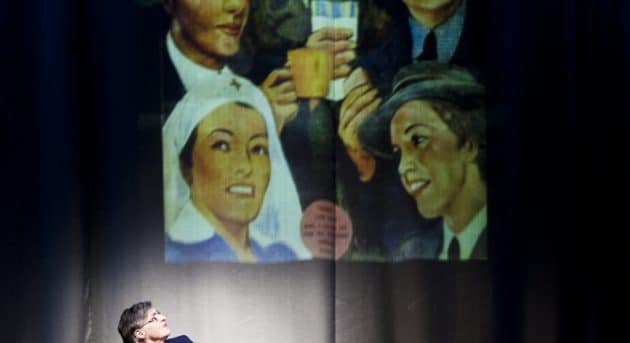Review: The Shoe-Horn Sonata — Ensemble Theatre
John Misto’s The Shoe-Horn Sonata is Sandra Bates’ swan song. In her final year as Artistic Director of the Ensemble Theatre, she is, along with Lorraine Bayly, reprising her performance from the Ensemble’s 1999 production of this enduring Australian play.
Misto’s Sonata is the friendship love-story of teenage WWII nurses Australian Bridie (Bates) and British Sheila (Bayly), who find each other in freezing waters, their evacuation from danger cut short as they are rounded up and sent to a Japanese POW camp. Misto’s framing device for the play is simple and familiar, but it works: fifty years after their release, the women have agreed to appear on TV special to talk about their appearances. Bridie and Sheila, however, haven’t spoken since they were liberated. As they recount their experiences, slowly, they try to reconcile their past selves with their current selves, trying to situate their trauma within the state of their present-day being.

A staple of the Australian high school syllabus for a while now, The Shoe-Horn Sonata does tend to feel like an educational text; the situations and imagery within the play are largely drawn from Misto’s interviews with women who survived the camps. It’s an unabashedly sentimental play, no matter the harshness of topic, and sometimes it’s quite touching, although sometimes it’s a little too sentimental; projected images of young nurses, and women and men from the camps, are included in the design (by Anna Gardiner) to tug the heartstrings, but their deployment is more mechanical than confronting and comes off cloying, like a couple of too heavy-handed lines.
Bayly brings great warmth to the character of Sheila, the once-prim British teenager who always wore gloves, the one who is carrying a dreadful weight from the past; she bickers with Bridie and is wryly self-deprecating. It’s a comfortable, un-fussy performance.
Bates’ Bridie is possessed of a quintessentially Australian brashness that is charming despite itself. More willing to talk about her experiences than Sheila, Bridie is a proud Chatswood native and a seemingly rational adult (she keeps her own trauma locked down, for the most part). Bates didn’t have a handle on the lines and stumbled through them on opening night, throwing off her delivery and the syntax of her sentences, putting up a bit of barrier between the audience and her performance, but that should settle in coming days.

Bates also directs. It’s a forthright, straightforward take on the play; it isn’t particularly inventive, but it doesn’t need to be – there just needs to be space for the actors to tell their stories to and about each other, and the difference between the television studio and the hotel room, the play’s two locations, needs to be clear, and it is.
At curtain call on opening night, the applause was warm and generous; any war-story play lethargy on the heels of the ANZAC anniversary seemed to be wiped away in favour of Bates’ legacy and the opportunity to see women take hold of the stage (and backstage as well; the crew is made up almost entirely of women). It’s a solid production of an enduring Australian play, and the Ensemble has done a good job with it.




